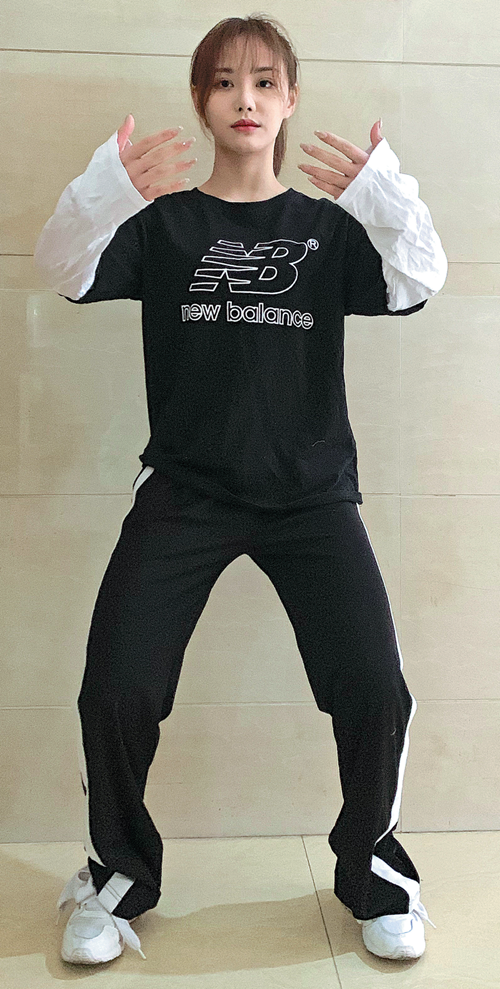 Liang Biying, a gold medal winner in tai chi at the 2019 World Wushu Championship, shares her short video clips online of her practicing tai chi during the ongoing epidemic. [Photo provided to China Daily] Liang Biying, a gold medal winner in tai chi at the 2019 World Wushu Championship, shares her short video clips online of her practicing tai chi during the ongoing epidemic. [Photo provided to China Daily]
Many of the millions of Chinese compelled to stay home during the novel coronavirus outbreak are still staying active indoors.
Many media outlets have reported on Chinese marathoners running around their furniture. One Xi'an man even claimed to have run 12,500 laps in his apartment.
But tai chi appears to be the most popular activity.
Among those who fanned the flames of this tai chi craze is Liang Biying, a gold medal winner in tai chi at the 2019 World Wushu Championship who took to short video sharing platform Douyin-known as TikTok outside of China-to share clips of her practicing the martial art during the ongoing epidemic.
Her latest video, titled A Woman Cooped Up at Home for Too Long Performs Tai Chi on the Balcony received more than 38,000 likes within 20 hours after it was posted on Feb 24. Another video which she posted on Valentine's Day has received more than 1.1 million likes.
Liang's videos have become so popular that a fireman who works at a makeshift hospital in Wuhan, Hubei province, approached her to conduct a livestreaming class for patients getting treated at the medical facility.
Having seen footage of patients practicing tai chi in such hospitals on social networking site Weibo, the 21-year-old senior student at the Shanghai University of Sport agreed without hesitation.
"The best thing about tai chi is that it is very inclusive and good for the body and mind. It can be performed anywhere and also by every person because it is not intense," she says.
According to Qiu Pixiang, a professor of Shanghai University of Sport who has judged at international martial arts competitions, tai chi is a great choice for a workout in a small space because "you can practice a routine within limited space".
"You can practice basic movements, such as throwing a punch or even train your strength and endurance by doing the horse stance," the 77-year-old tells China Daily. "You can even practice with the support of a chair or wall. I do this a lot while watching television."
The martial art is also an ideal exercise for people who are elderly or in poor health. Qiu says they can practice the "cloud hand" movement, which involves tracing an invisible oval in the air slowly and gracefully.
"Tai chi requires a smooth transition between each posture," he explains. "It is like Chinese calligraphy. Good calligraphy isn't about writing each character neatly. There must be a flow of energy from one stroke to the other."
Wushu (Chinese martial arts) is thousands of years old. In the 1950s, the government began to formulate national standards to develop wushu into a competition sport. However, despite these efforts, Qiu says that wushu still lacks influence outside the country.
"Take for example the international karate competition. It is covered by news media in more than 100 countries. The 2019 World Wushu Championship, in contrast, was covered by media from no more than a dozen countries and regions," he says.
Qiu says that the lack of publicity of wushu outside of China could be due to how diverse it is. For instance, tai chi alone has many different schools, and this has resulted in conflict regarding what should be promoted to the general public. Academics and masters have been updating tai chi routes since the 1950s.
"I believe the true essence of wushu lies in the grassroots. Solely focusing on the technical aspects will turn Chinese martial arts into gymnastics and eliminate its cultural and aesthetic significance," he says.
The situation, however, appears to be changing. In January, the International Olympic Committee announced that wushu will debut as an official sport at the 2022 Dakar Youth Olympics.
Contact the writer at zhangkun@chinadaily.com.cn |